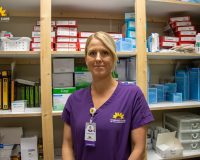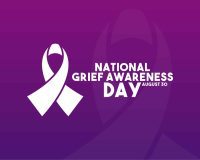
Technological advances in medicine continue to grow by leaps and bounds every day. Now those advances have moved into the hospice arena. It’s called telehospice and it’s changing the way hospice care is practiced.
Nationwide, hospices are using new and advanced technology to improve workflows, training, and patient care. For example, VITAS Healthcare is working with AT&T to develop therapies using 5G virtual reality technology to address chronic pain and anxiety among hospice patients.
Larry Graham, CEO, and founder of Curo Health Services is a firm believer in technology in that it adds another layer of care. “Whether that be telephonic, whether that be a centralized view of your charts, or being able to add on call center technology or data analytic technology to really understand what is going on with a patient’s illness and when they have the highest probability of exacerbation. Technology has a huge role to play in that,” he said at the Home Health Care News Summit conference in September 2019.
Virtual reality (VR) systems, for example, are gaining popularity in staff training and direct patient care. More and more hospice providers, such as the Hospice of Southern Maine, are using VR technology to train their staff. Working with Embodied Labs, Hospice of Southern Maine developed the “Clay Lab,” in which employees take on the role of Clay, a 66-year-old veteran with stage IV, incurable lung cancer.
Like Clay, the participant receives news of the terminal diagnosis, has a fall that leads to a discussion of hospice care, and finally experiences his final days and the end of his life. Some of these activities are not part of the typical hospice worker’s job experience but can help them understand more about the process as a whole.
“Virtual reality is going to be very powerful from a pain management perspective. We are already seeing it in clinical testing of the patient experience,” Nick Westfall, CEO of VITAS Healthcare, said at the Summit. “It is extremely powerful, even in terms of how you educate your workforce.”
The remote diagnosis and treatment of patients by means of telecommunications technology, called telemedicine, is also becoming increasingly important in hospice care. The biggest impact being seen is in rural areas where clinicians have to travel significant distances to reach the patient or in areas that are not accessible to hospice or palliative care clinicians.
Between August 2017 and January 2018, Hospice Services and Palliative Care of Northwest Kansas, Inc., in collaboration with The University of Kansas Medical Center, engaged in 218 telehospice video encounters involving 917 participants, including staff and patients. According to a study on the project published in February 2018, the program yielded significant cost savings for the hospice and participants reported that the program strengthened communication and relationships among staff, patients, and family.
Aspire Health, a community-based palliative care provider launched its telehealth palliative care service for patients in rural areas that are too sparsely populated to support in-home clinician visits. Their key goal is to support symptom management and keep patients in their homes and out of the hospital.
Aspire Health works with patients who are enrolled in Medicare Advantage, managed care Medicaid plans, and those who have traditional commercial health insurance, their program is focused on the sickest 1 percent of patients who live in rural areas. They identify patients who can benefit from their telehealth palliative care services through referrals from physicians and case managers, as well as through analysis of claims data that looks for markers of advanced illness, complex comorbidities and/or increased use of the health care system, such as hospitalizations.
They primarily work with patients via telephone, which is patients’ first preference among the age group Aspire typically serves. The program operates on an interdisciplinary team model that is led by social workers who are supported by registered nurses or nurse case managers and also by physicians who help when patients become symptomatic.
Emily Cook, chief clinical operations officer for Aspire Health and affiliated primary care provider CareMore Health says, “The purpose of the program is to help patients and families know what their choices are to, first, formulate what their goals of care might be according to their own values and how they want to navigate the last year or two or their lives, and what they want their lives to look like and what they want their health care to look like.”
“First and foremost,” she added, “it’s about giving patients informed choice so that they are the architects of their lives and of their health care, so our programs help build their confidence.”




